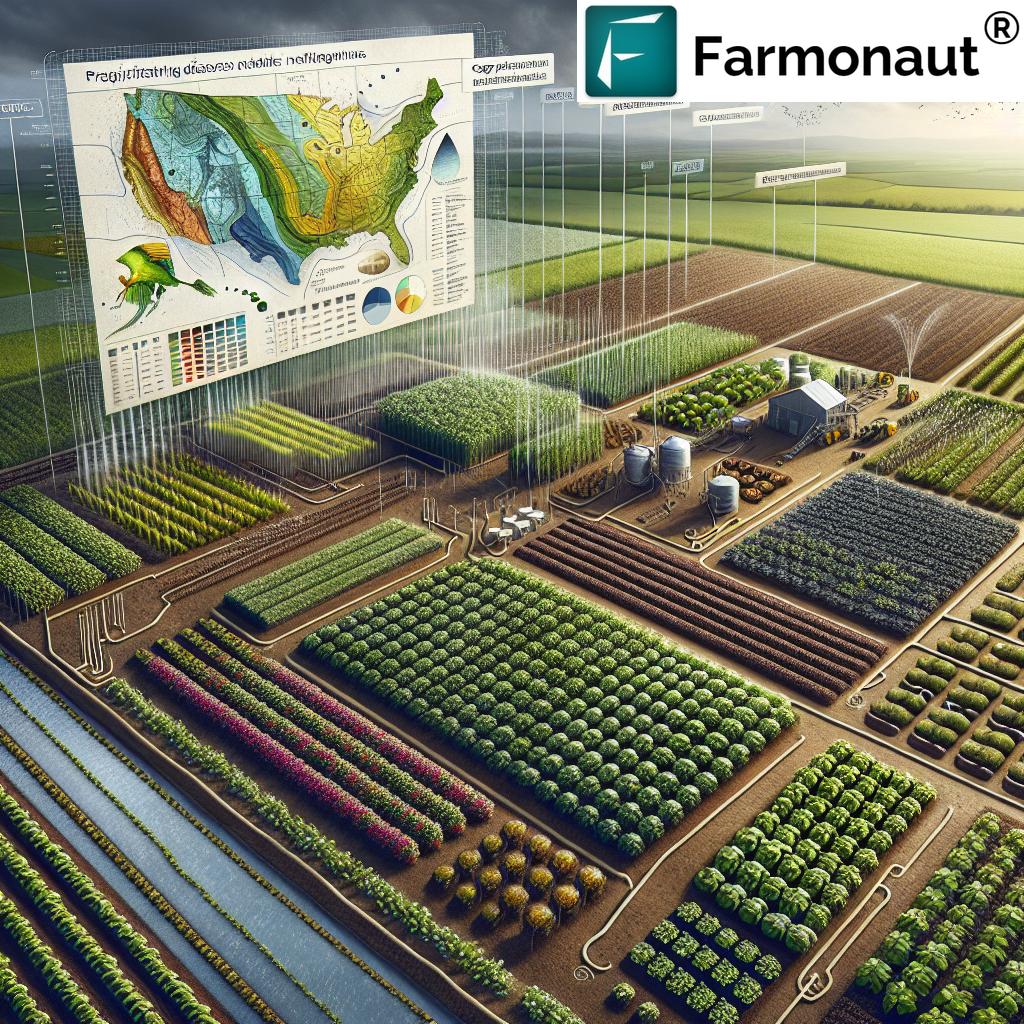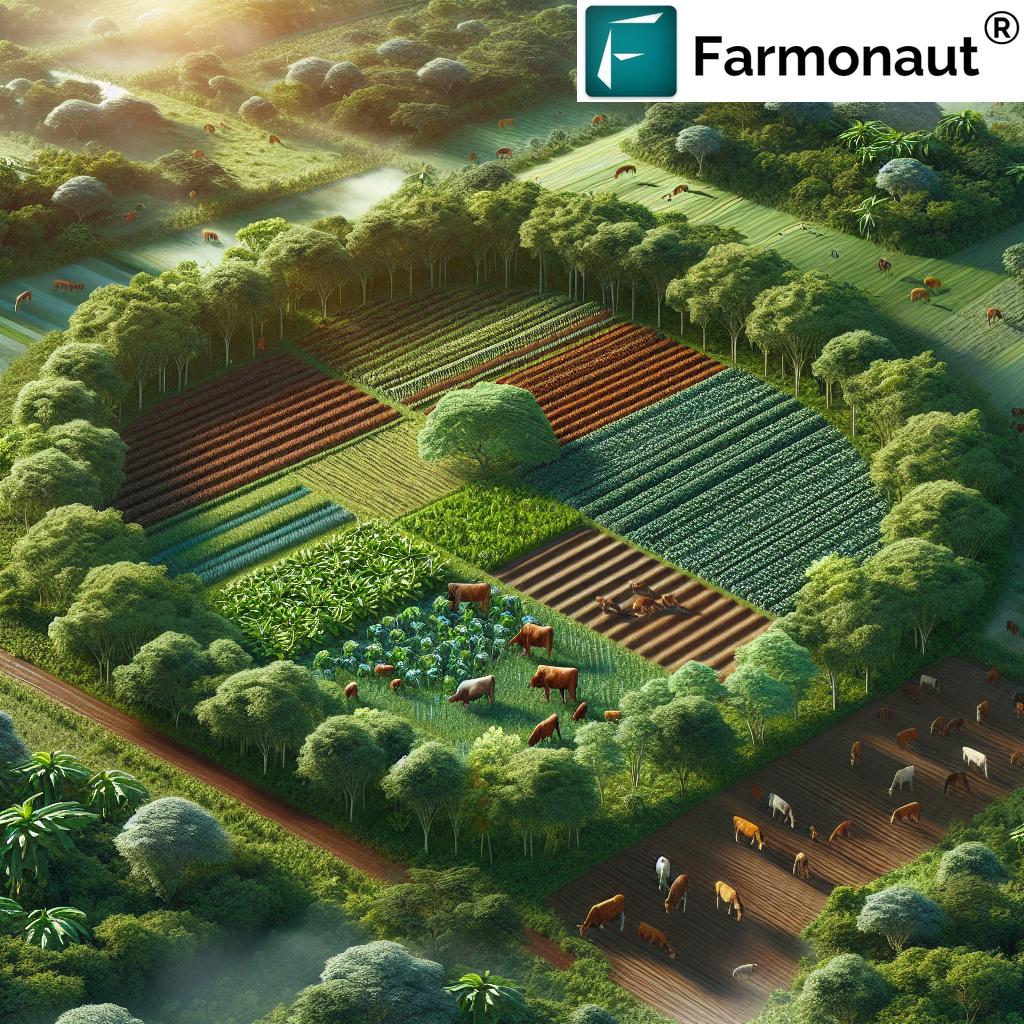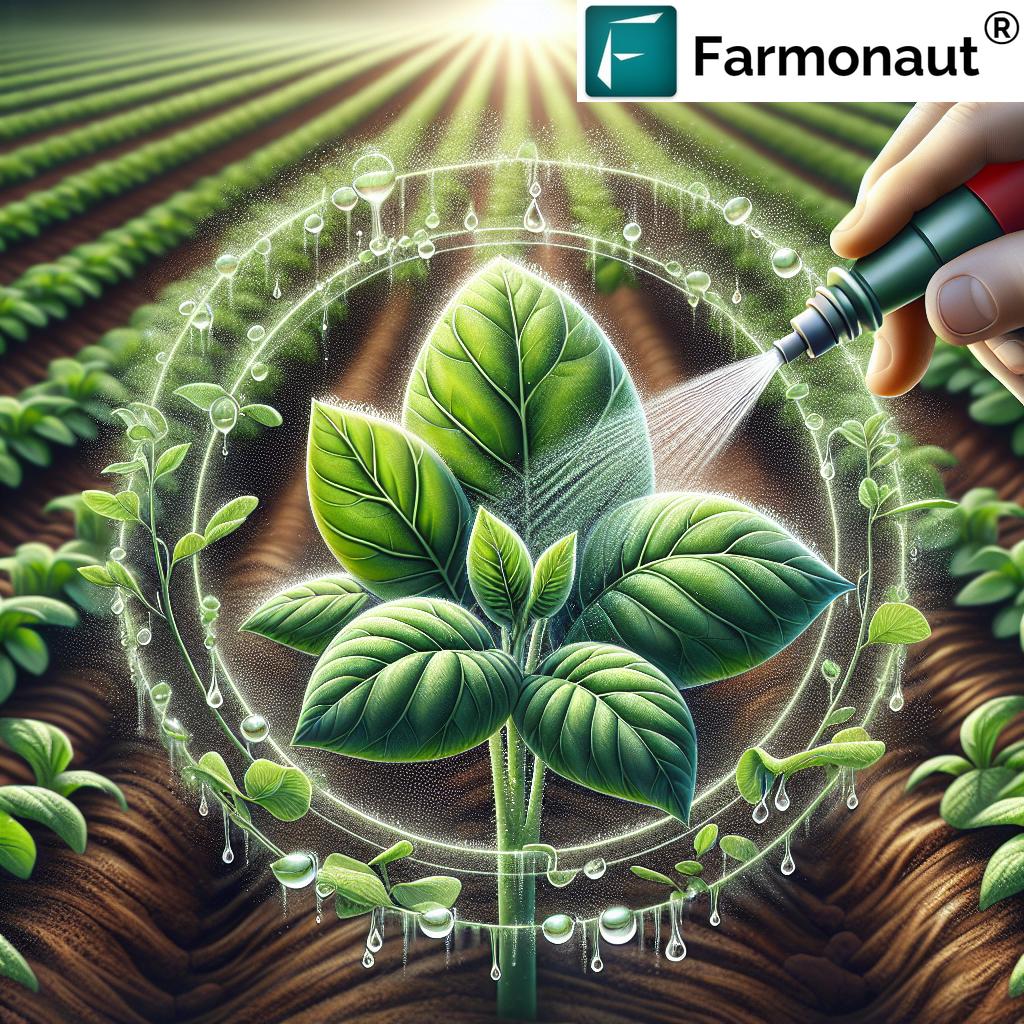7 Uses of Weather Forecasting in Agriculture: Empowering Farmers with Accurate Predictions & Resilient Decisions
“Over 70% of agricultural losses are weather-related, highlighting the critical role of precise forecasting in farming decisions.”
Table of Contents
- Introduction: Why Weather Forecasting for Agriculture Matters
- 1. Optimizing Resource Management
- 2. Risk Mitigation
- 3. Precision Farming Techniques
- 4. Pest and Disease Management in Crops
- 5. Seasonal Crop Planning
- 6. Sustainable Farming Practices
- 7. Financial Planning and Insurance in Agriculture
- Technological Advancements: AI, Data, and Global Initiatives
- Weather Forecast Data and Agricultural Decision-Making
- Farmonaut: Accessible, Accurate Weather Data & Crop Management
- Frequently Asked Questions
- Conclusion: Building Climate Resilience with Weather Forecasting
Introduction: Why Weather Forecasting for Agriculture Matters
The unpredictable nature of weather presents both opportunities and significant challenges for modern agriculture. From the earliest sowing to the crucial stages of harvest, every decision in farming is intricately tied to weather conditions. As climate change drives more frequent adverse weather events, it has become essential for farmers to move from reactive strategies to proactive, data-driven choices.
Weather forecasting for agriculture delivers more than forecasts— it serves as a strategic tool, equipping agricultural professionals with accurate predictions to optimize practices, mitigate risks, and enhance resource management throughout the season. Integrating technology and innovation, especially with the rise of AI-powered models, pushes the boundaries of what’s possible in resource optimization in agriculture.
Let’s explore the transformative seven uses of weather forecasting in agriculture, each amplified by advancements in data accessibility, mobile apps, and smart analytics. Discover how these applications underpin productivity, climate resilience, and sustainability— enabling farmers worldwide to adapt, thrive, and secure our future food security.
1. Optimizing Resource Management: Smart Allocation Powered by Weather Forecasts
Resource optimization in agriculture is crucial for long-term productivity, sustainability, and profitability. Accurate weather forecasting for agriculture empowers farmers to allocate resources efficiently, making precise decisions on irrigation, fertilization, and crop care.
How does it work?
- Rainfall Predictions: Reliable rainfall forecasts help farmers devise tailored irrigation schedules. When anticipating adequate rain, they can minimize artificial watering, conserve water, and reduce dependence on costly watering systems.
- Temperature & Humidity Insights: By understanding patterns in temperature and humidity, farmers can determine optimal planting windows, schedule fertilization, and time pest control applications for maximum efficacy.
- Resource Optimization at Every Step: From predicting the right moment for sowing to managing nutrient applications, every input can be allocated more efficiently when guided by up-to-date weather data.
By integrating next-generation weather prediction platforms and mobile alerts, agricultural professionals can reduce costs, maximize yields, and enhance productivity while conserving precious environmental resources.
For those looking to further improve resource allocation and trace every stage of their crop’s journey, Farmonaut’s Blockchain-Based Product Traceability solution ensures transparent monitoring from farm to market—vital for supply chain integrity and environmental stewardship.
2. Risk Mitigation: Proactive Defense Against Potential Weather Hazards
Farming is inherently risky, with extreme adverse weather events such as storms, droughts, and frosts threatening crop yields, livestock, and infrastructure. Risk mitigation is no longer about reacting to disasters—modern agricultural risk management starts with anticipating threats and deploying proactive measures.
- Forecasts for Adverse Weather: Detailed forecasts alert farmers about oncoming hazards (e.g., severe storms, heatwaves, cold snaps, or rainfall deficits). Armed with real-time alerts, farmers can protect crops and livestock, reinforce structures, or reschedule harvests to minimize potential losses.
- Risk Management for Infrastructure: Reliable forecasts help in planning capital investments (e.g., proper drainage, windbreaks, storage facilities) to better withstand extreme events and reduce future risks.
- Mitigating Livestock Risk: Weather alerts are crucial for livestock management. Farmers can implement plans for feed, shelter, and evacuation ahead of adverse weather, directly minimizing damage and reducing dependency on emergency interventions.
Advanced forecasting data empowers farms to adapt rapidly, safeguarding livelihoods, assets, and productivity.
For growers seeking robust documentation for insurance claims and financing, Farmonaut’s Satellite-Based Crop Loan and Insurance Solutions can help verify damage, secure compensation, and enhance financial resilience.
“AI-powered weather forecasting can improve crop yield predictions by up to 30%, revolutionizing agricultural planning and resilience.”
3. Precision Farming Techniques: Tailoring Practices to Local Conditions
Precision farming techniques represent a paradigm shift—moving away from “one-size-fits-all” approaches to highly localized management practices driven by accurate weather predictions for farmers.
- Site-Specific Decisions: Integrating weather data allows for management at the field or even zone level. Farmers can adjust planting densities, select crop varieties, and tailor fertilizer applications based on real-time localized forecasts.
- Digital Platforms and Satellite Technology: AI-driven maps, crop stress alerts, and custom advisories (like those generated by Farmonaut’s Jeevn AI system) transform data into actionable strategies, optimizing productivity on every hectare.
- Reducing Resource Wastage: By anticipating site-specific weather conditions, farmers can reduce reliance on excess fertilizers, pesticides, and irrigation, supporting both higher yields and environmental sustainability.
For agricultural professionals with large holdings or contract farms, tools like Farmonaut’s Large Scale Farm Management App enable real-time decision-making across multiple fields and teams, making precision farming both scalable and affordable.
4. Pest and Disease Management in Crops: Predict, Prevent, and Control
Few factors threaten yields and crop quality as swiftly as pest outbreaks or disease epidemics. Fortunately,pest and disease management in crops has been revolutionized by the integration of localized weather forecasts.
- Weather-Informed Disease Modeling: Many pests and pathogens (e.g., aphids, rust, mildew) are directly influenced by temperature, humidity, and rainfall patterns. By analyzing forecast data, farmers can predict periods of high pest activity and deploy biological or chemical controls at the most effective time.
- Minimizing Chemical Use: Preemptive control, aligned with accurate predictions, reduces the reliance on unnecessary pesticide applications—cutting costs, promoting ecological balance, and fostering safer food.
- Digital Tools: Apps integrating pest risk alerts (such as Farmonaut’s Personalized Advisory Platform) help farmers automate scouting, improve diagnostics, and adopt precision interventions.
By leveraging weather forecasting for agriculture, farmers can break the cycle of reactive pesticide use and move towards a sustainable, intelligent, and cost-effective integrated pest management paradigm.
Weather Forecast Data and Agricultural Decision-Making: Comparative Matrix
5. Seasonal Crop Planning: Maximizing Success with Long-Range Predictions
Long-range weather forecasts have become a linchpin for seasonal crop planning. They empower farmers to:
- Select appropriate crop and seed varieties that match expected temperature and rainfall patterns.
- Schedule planting and harvesting at optimal times, enhancing yields and reducing exposure to seasonal weather risks like early frost or monsoon delays.
- Plan inputs efficiently (labor, machinery, nutrients), maximizing both resource use and output.
Especially in regions affected by changing climatic conditions, long-term planning built on accurate weather predictions enables farmers to adapt cropping cycles, rotate crops for resilience, and diversify to mitigate risk.
Farmonaut’s Crop Plantation and Forest Advisory service uses multispectral satellite data and seasonal forecasts to support well-informed decisions for both food and non-food crop planning.
6. Sustainable Farming Practices: Stewardship Through Smart Forecasting
Environmental stewardship is central to sustainable farming practices. Weather-informed planning plays a pivotal role in reducing chemical runoff, conserving water, and maintaining soil health:
- Smart Irrigation: Using rainfall predictions and soil moisture models (such as those provided by Farmonaut’s crop monitoring platform), farmers can schedule watering only when necessary, minimizing overirrigation and runoff.
- Climate-Smart Inputs: Timed fertilizer applications—applied before forecasted rainfall, for example—help ensure nutrients stay in the field, not lost to streams and rivers.
- Erosion & Land Management: Predicting heavy rain events and soil erosion risk allows the implementation of ground cover crops, contour barriers, or temporary runoff diversions to protect vulnerable soils.
- Carbon Footprinting: Weather and emissions tracking, available via Farmonaut’s Carbon Footprinting Platform, provides actionable data to reduce the environmental impact of farming at scale.
Adapting farming practices based on evolving weather patterns is essential for building long-term resilience and food security.
7. Financial Planning and Insurance in Agriculture: Weather-Informed Security
Modern financial planning for agriculture now explicitly incorporates weather data. Why?
- Weather Insurance: Accurate, field-level forecasting is at the heart of many agricultural insurance products. Clear, historic, and forecasted weather patterns help farmers secure appropriate coverage, adjust premiums, and access timely payouts after weather-related disasters.
- Loan Risk Assessment: Financial institutions use weather data to assess crop viability, reducing default risks, and facilitating credit access for farmers. Integration with systems like Farmonaut (Crop Loan & Insurance) automates this process, minimizing bureaucracy and fraud.
- Proactive Budgeting: Farmers can plan input purchases, labor, and machinery investments according to seasonal risk profiles, avoiding unnecessary expenditures and optimizing return on investment.
By reducing uncertainty, weather forecasting for agriculture enhances food security and underpins a resilient rural economy.
Farmonaut: Making Weather Intelligence and Precision Farming Accessible for All
We at Farmonaut are dedicated to bringing advanced satellite-based, AI-powered weather and crop data directly to farmers, agribusinesses, and other stakeholders—via our Android, iOS, web app, and API. Our mission is to make precision agriculture affordable and universally available, democratizing technology that was once out of reach for most.
Our Technologies Empowering Farmers:
- Satellite Crop Monitoring: Real-time NDVI, soil moisture, vegetation health—guiding informed crop, irrigation, and input decisions.
- Jeevn AI-based Advisory: Tailored insights, weather alerts, pest control timing, and effective resource allocation.
- Blockchain Traceability: Full transparency in supply chains, ensuring trust and minimizing fraud.
- Fleet and Resource Management: Optimize fleets, track agricultural machinery, and reduce operational costs with satellite-based insights.
- Carbon Footprinting: Track climate impact in real time, fostering sustainable farming and environmental compliance.
Whether you are an individual farmer, agribusiness, or policy planner, our platform supports scalable, cost-effective, and data-rich weather data for farm decision making.
Accessible Solutions for All:
- Subscription-based with flexible packages for every operation size.
- API integration for businesses and research.
- Field-level monitoring, real-time alerts, smart recommendations.
Ready to leverage accurate weather predictions for farmers and build resilience into your agricultural operations? Download the app, explore our platform, or access our developer documentation for advanced integration today.
Technological Advancements & Global Initiatives: The Future of Weather Intelligence
The intersection of artificial intelligence (AI), machine learning, and vast weather datasets has transformed the landscape of weather forecasting for agriculture. Here’s how forward-thinking technologies are enabling farmers everywhere:
- AI-Powered Forecasts: Deep learning algorithms analyze satellite images, climate records, and live sensor data, achieving unprecedented accuracy and bringing hyper-localized forecasts to every farm.
- Mobile and Web Platforms: Weather alerts, personalized risk dashboards, and actionable decision support fit right in the palm of the user, boosting both adoption and impact.
- Global Initiatives: Projects delivering AI-driven weather apps in rural India have already yielded immense benefits—reducing debts, increasing savings, and enhancing climate resilience in farming. Similar strategies are expanding throughout Asia, Africa, and Latin America, strongly improving global food security.
Environmental sustainability, resource efficiency, and data-driven intelligence are no longer isolated ideals but achievable realities—thanks to modern weather prediction systems.
To begin using these technological advancements for your operation, try Farmonaut’s Fleet Management Module, which harnesses satellite data not only for weather alerts but for tracking, cost reduction, and improved machinery utilization on farms of every size.
Frequently Asked Questions (FAQ)
Q1. How does weather forecasting help farmers in crop planning?
Weather forecasting for agriculture allows farmers to select crops and varieties best suited for expected conditions, schedule planting/harvesting, and reduce the risk of weather-related losses, improving both yields and profitability.
Q2. What technologies support weather-based farm decision making?
Technologies such as satellite imaging, AI-powered models, mobile apps, sensors, and open APIs provide farmers with precise, timely, and localized weather data for every stage of farm management.
Q3. How can Farmonaut help my farm integrate precision weather forecasting?
We at Farmonaut deliver real-time weather alerts, crop monitoring, AI advisories, and resource optimization tools—affordable and easy to access via our Android, iOS, browser App, or API. Whether you manage smallholder fields or large plantations, our platform supports smarter, more resilient farming.
Q4. Can weather data reduce resource wastage and environmental impact?
Absolutely—weather-based decisions help optimize irrigation, fertilizer, and pesticide applications. This minimizes wastage, reduces runoff, and promotes sustainable stewardship of natural resources.
Q5. How does weather forecasting affect farm insurance and financial planning?
Accurate weather forecasts underpin crop insurance products, risk assessment for loans, and overall financial resilience, ensuring that farmers can recover quickly after weather-induced losses.
Conclusion: Building Resilience and Sustainability with Weather Forecasting for Agriculture
The future of farming is data-driven, resilient, and environmentally conscious. As climate uncertainties increase, weather forecasting for agriculture stands as a pillar—enabling farmers to optimally allocate resources, mitigate risk, and implement sustainable practices that lead to food security for all.
By integrating accurate weather predictions and advanced technologies such as Farmonaut’s satellite and AI-based solutions,
we are making it possible for every farmer to adapt to changing climatic conditions, optimize management, and thrive in a rapidly evolving agricultural landscape.
Take the next step:
- Download the Farmonaut App: Web, Android, iOS
- Explore API Solutions: Satellite & Weather API
- Boost operations with Farmonaut’s innovative modules: Large Scale Farm Management, Carbon Footprinting, Plantation Advisory
Empower your farm, secure your harvest, and be ready for whatever the sky has in store—with data-driven, weather-smart agriculture.












